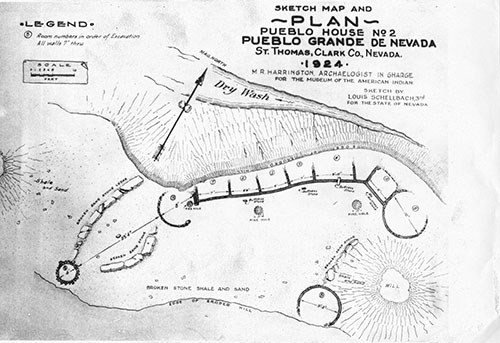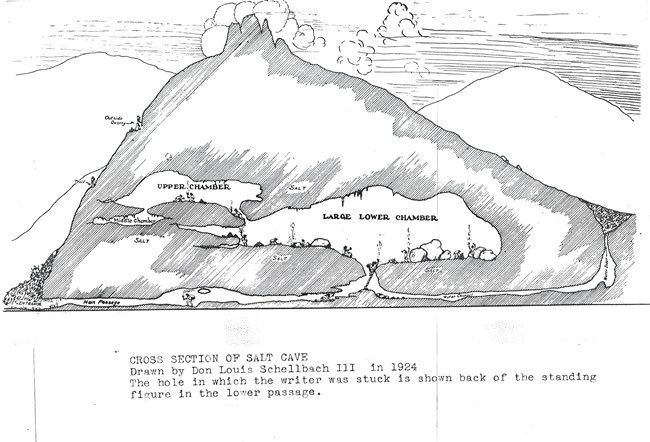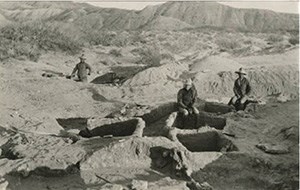
More than 1,000 years ago, Native Americans began migrating to the area that was to become Lake Mead. A native culture developed and flourished in the Moapa Valley of Southern Nevada. This culture's development paralleled the well-known Puebloan cultures of the Southwest in the Four Corners area of Utah, Colorado, New Mexico and Arizona. The Native American groups shared technology and lifestyle, but they may or may not have shared language and kinship. The modern Hopi culture in Arizona claims all of these people as their ancestors. In the Hopi language these "ancient ones" are known as Hisatsinom. Archaeologists originally identified this fascinating culture as Anasazi. Today, they are known as the Ancestral Puebloan people. To plan a trip to the Lost City museum, visit the Lost City Nevada State Park website. History The documented history of the area began in 1827 when Jebediah Smith found various artifacts while exploring Southern Nevada. Pueblo Grande de Nevada, a complex of villages, was first seen by whites in 1867. There was little interest in the area until 1924 when John and Fay Perkins, citizens of Overton, Nevada, stumbled across the ruins. The "Lost City" captured the imagination of Nevada and soon became a tourist spot.In studying the ruins, archaeologist Mark Raymond Harrington and his team, learned that the Pueblo had only been one group in a string of Native American inhabitants living throughout the lower Moapa Valley, the location of Pueblo Grande de Nevada. Archaeological remains indicated that the first people to live in the area had been the Basketmakers, so-named for their intricate and prolific use of basketry. Eventually the Pueblo people moved into the area. The evidence suggests that the Pueblo and Basketmakers lived side by side, often combining their ways of life. Whether by peaceful means or through war, the cause for this melding of cultures is unknown. 
Even though the last inhabitants of the Lost City had left hundreds of years earlier (the Paiute), the city was a remarkable find for archaeologists and historians. Unearthing walls, tools, weapons, food and even skeletal remains provided archaeologists the basis for studying and understanding an important part of Native American history. However as the Hoover Dam was nearing completion it became apparent that the reservoir that would be formed behind the dam, Lake Mead, would eventually cover the Lost City. The National Park Service, working with the state of Nevada, rushed to recover as much information as possible from the doomed sites. Archaelogists literally worked up until the last minute, recording information as water began to seep into the site.

Salt Caves The Lost City ruins were just part of the exploration of the area. To the south of Overton Beach are prehistoric salt mines. The early inhabitants of the region mined these salt caves for food preparation and trading. The caves were excavated during Harrington's study of the area in 1925 and 1926. There were many items found in the caves -- pottery, stone clubs, sandals and other items. 
Preservation Initial excavations of the sites were carried out in the mid-1920s by archaeologist Mark Raymond Harrington. Harrington was later assisted by members of the Civilian Conservation Corps as they rushed to complete excavations in areas that were to be covered by Lake Mead when Hoover Dam was built in 1938. Not all sites were drowned by the Lake, but the most representative, Pueblo Grande de Nevada (Lost City) was. Luckily, hundreds of sites remained above water and various artifacts were saved from the Lost City to be housed in the Lost City Museum of Archaeology in Overton, Nevada. But for every discovery saved, myriad others were lost. All future study of the area would be limited to the hastily assembled collections and notes of the pre-Lake Mead archaeologists. By the 1950s it was already obvious to historians, archaeologists and anthropologists that the surviving artifacts of Lost City raised more questions than answers. Answers that would remain lost at the bottom of Lake Mead. 

NPS - Lake Mead NRA Cultural Staff |
Last updated: May 16, 2025
